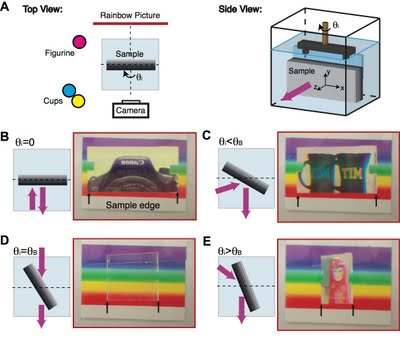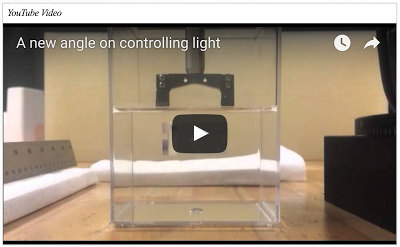Background & Motivation: Method:The ability to control light has long been a major scientific and technological goal. In electromagnetic theory, a monochromatic electromagnetic plane wave is characterized (apart from its phase and amplitude) by three fundamental properties: its frequency, its polarization, and its propagation direction. The ability to select light according to each of these separate properties would be an essential step in achieving control over light. Tremendous progress has been made toward both frequency selectivity and polarization selectivity. Frequency selectivity can be obtained, for example, by taking advantage of photonic band gaps in photonic crystals. Polarization selectivity is accomplished, for example, by means of a “wire grid” polarizer or by exploiting birefringent materials. Methods based on interference and resonance effects have been explored for angular selectivity, but they have limited applications because they are sensitive to frequency. In our work, we tailor the overlap of the bandgaps of multiple one-dimensional photonic crystals, each with a different periodicity, in such a way to preserve the characteristic Brewster modes across a broadband spectrum. We prove this idea theoretically and realize it experimentally with an all-visible-spectrum, p-polarized angularly selective material-system. Our method enables transparency throughout the visible spectrum at one angle, the generalized Brewster angle, and reflection at every other viewing angle. Experimental setup and observation.
(A) Schematic layout of the experimental setup. The system is immersed
in a liquid that is index matched to ε1 = εSiO2 = 2:18. (B) Normal
incident angle setup. The sample behaves as a mirror and reflects the
image of the camera. (C) θi = 30 setup. The sample behaves as a mirror
and reflects the image of MIT cups in the lab. (D) θi = θB = 55 setup.
The sample becomes transparent for the entire visible regime for
p-polarized light. (E) θi = 70 setup. The sample behaves as a mirror and
reflects the figurine placed at the corner of the table. In B-E a
polarizer is installed on the camera so it detects only p-polarized
light. References: More detailed description can be found in our paper published on Science, March 28th, 2014:
Here
is a more detailed invited review paper published on Applied Physics
Reviews, March 1st, 2016, which discussed many potential applications
and outlook of this technology:
This work was chosen to be one of top 100 science stories of 2014 by the Discover Magazine. This work was featured on MIT homepage on March 28th, 2014. Some nice news article written about this work: In English:
Press Coverages also includes: In English Discover Magazine, MIT News, MIT Energy Initiative, PhysicsWorld, Physics Today, Photonics.com, Science Daily, Position & Promotions, iScience Times, Science News, eurekalert!, CleanTechnica, Optics & Photonics, Science Newsline, LabOnline, Daily Kos, Electronics 360, Student Science, Knovel, Global Times, Novus Light, EE Times, The Orange Room, The Raw Story, DMWmedia, Prezi.com, XinhuaNet In Chinese |


